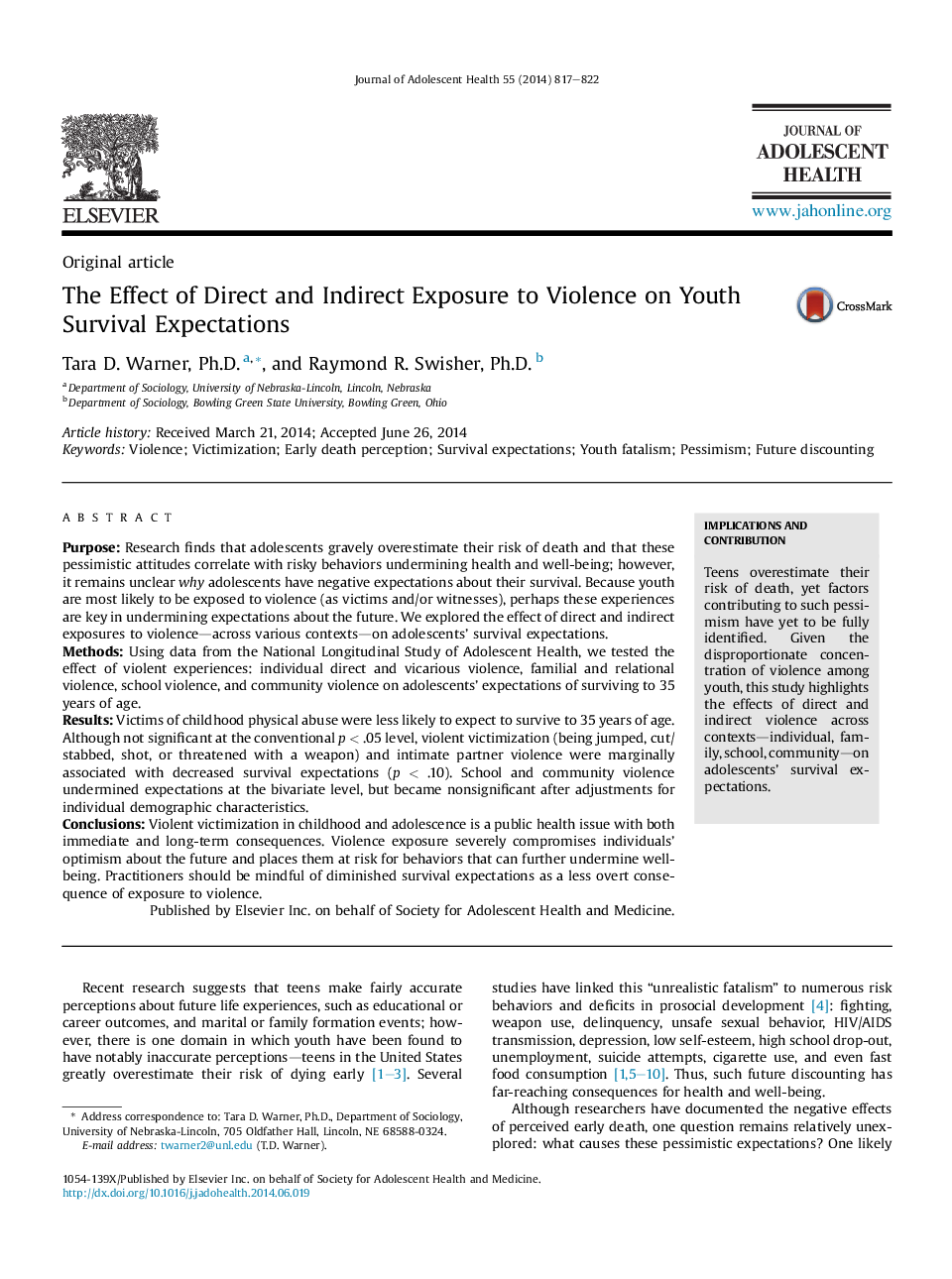| Article ID | Journal | Published Year | Pages | File Type |
|---|---|---|---|---|
| 1078372 | Journal of Adolescent Health | 2014 | 6 Pages |
PurposeResearch finds that adolescents gravely overestimate their risk of death and that these pessimistic attitudes correlate with risky behaviors undermining health and well-being; however, it remains unclear why adolescents have negative expectations about their survival. Because youth are most likely to be exposed to violence (as victims and/or witnesses), perhaps these experiences are key in undermining expectations about the future. We explored the effect of direct and indirect exposures to violence—across various contexts—on adolescents' survival expectations.MethodsUsing data from the National Longitudinal Study of Adolescent Health, we tested the effect of violent experiences: individual direct and vicarious violence, familial and relational violence, school violence, and community violence on adolescents' expectations of surviving to 35 years of age.ResultsVictims of childhood physical abuse were less likely to expect to survive to 35 years of age. Although not significant at the conventional p < .05 level, violent victimization (being jumped, cut/stabbed, shot, or threatened with a weapon) and intimate partner violence were marginally associated with decreased survival expectations (p < .10). School and community violence undermined expectations at the bivariate level, but became nonsignificant after adjustments for individual demographic characteristics.ConclusionsViolent victimization in childhood and adolescence is a public health issue with both immediate and long-term consequences. Violence exposure severely compromises individuals' optimism about the future and places them at risk for behaviors that can further undermine well-being. Practitioners should be mindful of diminished survival expectations as a less overt consequence of exposure to violence.
